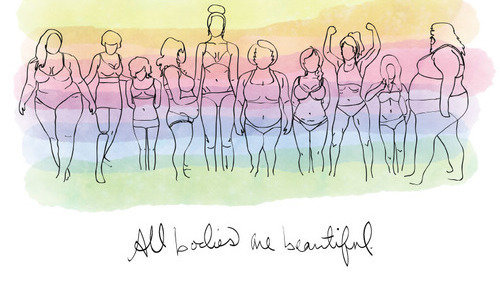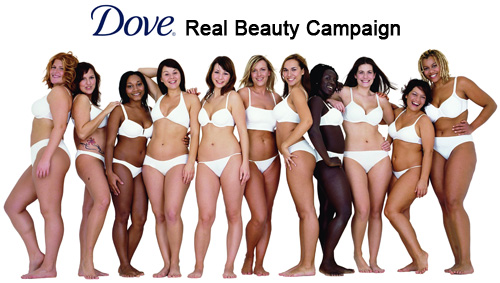To the Food Police in My Life

Samiksha Manjani is a Student Staff member at UMBC’s Women’s Center. She is a Political Science and Sociology double-major graduating in May 2019.
Eating around other people has become the bane of my existence. I don’t remember the last time I’ve eaten in peace without the “food police” (family, friends, strangers, etc) hitting me with a microaggression about my food choices. Receiving these microaggressions day in and day out has made the simple task of eating daunting and anxiety-ridden.
Here are just SOME of the scenarios that I have been in:
Whenever I order a salad: “What, are you on a diet?”

Family members when they see me eating only a salad.
Whenever I order anything other than a salad: “Do you really need that?”

What these situations demonstrate is that it doesn’t actually matter what I’m eating when I get these microaggressions. In fact, it demonstrates that food policing has nothing to do with the food itself. Food policing is really about policing women’s bodies, sizeism, and buying into the economics of diet culture.
Policing Women’s Bodies: The Feminine Ideal
Our patriarchal society begins policing women’s bodies in early childhood. Women are taught from an early age that our appearances define our sense of worth in society, and that thinness directly correlates to value. Furthermore, because we live in a heterosexist world, we’re taught that the judges of our appearances are essentially men. Thus, we’re indoctrinated early on to strive towards a beauty standard that is both largely rooted in the male gaze and is entirely unattainable. This message is constantly reinforced by the institutions in our lives: from schools, the media, and even from our own families sometimes. We’re constantly told that we should pay attention to our appearances and maintain the right body size. But what exactly encompasses this beauty standard regarding body size?
Click to view slideshow.Historically, the American beauty standard favored plumper bodies. Prior to the mid-20th century, robust bodies were considered to be the feminine ideal. Larger body size was considered indicative of fertility and wealth. Famous beauty icons even into the 20th century, like Marilyn Monroe, were heavy set. Advertisements at the time sold products meant to help women gain weight, not lose weight (seems almost impossible to imagine, I know). Full stomachs, thick thighs, and fat (in the “right” places) were considered healthy & desirable.


Since the mid-20th century, we’ve seen a shift in the beauty ideal from larger bodies to thinner bodies. By the 1960s, the feminine ideal was slender and wispy. In just 10 years, the ideal body size shifted immensely from women with bodies like Marilyn Monroe to bodies like Twiggy. This trend of willowy and thin bodies (like that of Kate Moss) continued to be the feminine ideal throughout the 90s.
Today, the ideal body size still favors thin bodies. American society idealizes an hourglass figure with measurements of about 36-26-36 inch measurements (bust-waist-hips). As you can see, the waist measurement is significantly smaller than the chest and hip measurements.
The current beauty standard presents American women with a conundrum (in the way unrealistic beauty standards always do). As the measurements listed above and current beauty icons such as the Kardashians demonstrate, the ideal body is simultaneously curvy and thin at the same time. While heavy-set busts and hips are considered ideal, so are small waists, thin arms and slender legs. The ideal weight for American women is around 128 pounds, yet the average weight for American women aged 20+ is 168.5 pounds.

The Kardashians
Sizeism
This beauty standard has real-life consequences for American women. This is because we have associated body size with women’s sense of worth in American society; such that those who are closer to the beauty standard, have higher social value in our society. Therefore, women who have or are close to this ideal body size are considered more worthy. We associate positive values with women who meet the ideal body size.
This phenomenon is called thin privilege. Thin privilege means that individuals who move through the world in a thin body are granted certain advantages and immunities over people who are not thin. What’s important to remember is that it doesn’t matter whether you actually “feel thin” or not to have thin privilege. If other people perceive you as thin, then you maintain an advantage.
On the other hand, women who do not meet this ideal body size and are larger often deal with sizeism. Sizeism is the prejudice or discrimination on the grounds of a person’s size (aka: “body shaming,” “fat shaming”). Sizeism is rooted in fatphobia, which is the fear and dislike of obese people and/or obesity.
Sizeism can have severe consequences: one consequence is fat discrimination such as verbal and physical aggression, increased scrutiny of eating habits and extreme pressure to go on dangerous diets, increased health insurance premiums, being provided inferior medical care or being denied certain medical procedures, and/or being judged as “lazy,” “stupid,” and/or “weak.”
Fundamental to our sizeist culture is the notion that being overweight or obese is the result of diminished morality; being heavy is seen as the embodiment of gluttony, sloth, etc. Additionally, because of the deep-rooted belief in self-reliance in American culture, body size is regarded as completely under the control of the individual. Therefore, being heavy or obese is considered to be caused by destructive individual behavior. Ironically, however, we often engage in destructive individual behavior because of the constant and toxic societal pressure to be unattainably thin (e.g. skipping meals).
Here is an advertisement that a shampoo company ran which I think perfectly exemplifies the attainability of the ideal body:
“Your breasts may be too big, too saggy, too pert, too flat, too full, too far apart, too close together, too A cup, too lopsided, too jiggly, too pale, too padded, too pointy, too pendulous or just two mosquito bites. But with Dep styling products, at least you can have your hair the way you want it. Make the most of what you’ve got.”
As this ad demonstrates, no matter how you look, even if you’re the closest to the ideal body size, it’s still not enough. Despite this, we still strive incredibly as a society to meet a body size that for many of us is simply not possible. Why?
Diet Culture
 One of the main driving forces of this unrealistic female body ideal is the diet industry. The diet industry is worth $66.3 billion; selling everything and anything from diet pills to meal plans to member-based fitness clubs.
One of the main driving forces of this unrealistic female body ideal is the diet industry. The diet industry is worth $66.3 billion; selling everything and anything from diet pills to meal plans to member-based fitness clubs.
The diet industry’s primary target? Women. The diet industry, for all the good it may or may not do, profits off of women feeling insecure about their bodies.
Many of the products being peddled can contain harmful ingredients. These products are often advertised by famous artists and celebrity influencers. For-example, many celebrities have endorsed the newest trend in diet products: diet teas. Many diet teas contain senna, which has been approved by the U.S. Food & Drug Administration as a laxative. Although senna can be helpful to combat occasional constipation, the FDA has warned that prolonged use (like in a diet tea) could cause liver, kidney, and colon problems. Despite this, many celebrity influencers still promote diet teas.
The pervasiveness of diet culture makes it nearly impossible to “just ignore it.” As a result, eradicating it is bound to be a long and difficult process. Truthfully, it would probably require an overhaul of the entire system, but through certain steps, we can begin to diminish its effects.

 One way is to actively support and be a proponent of body diversity. The body diversity or body positive movement is the acceptance of all human body types. It is rooted in the belief that all human beings should have a positive body image, and be accepting of their own bodies as well as the bodies of others. It also understands that body size is not the same thing as health.
One way is to actively support and be a proponent of body diversity. The body diversity or body positive movement is the acceptance of all human body types. It is rooted in the belief that all human beings should have a positive body image, and be accepting of their own bodies as well as the bodies of others. It also understands that body size is not the same thing as health.
You’ve probably heard the phrase “bikini bodies.” You may have also at some point fretted over the idea of wearing a bathing suit to the pool or beach (lord knows I have). The diet industry would have you believe that, in order to have a good bikini body, you must go on a diet in order to be the right size in the right areas. With a body positivity lens, we would say that ALL bodies are bikini bodies if there’s a bikini on your body!

Continuing to raise awareness and celebrate body diversity is essential to disrupting the diet industry. There are so many people already doing this amazing work:
- Sonalee Rashatwar, a social worker and an activist sex therapist based in Philadelphia, works with clients to raise self-esteem regarding body image.
- Tess Holiday is a plus-sized model who continues to challenge the fashion industry on body size.
- Jessamyn Stanley is a yoga instructor based in Durham, North Carolina who uses yoga to encourage body positivity in her students.
- Last, but not least, Imogen Fox gives us a very raw, often vulnerable, and eye-opening glimpse of what it means to be body positive as a disabled person, challenging our perceptions of disabilities.
Not only should individuals adopt a body positivity outlook, companies should also do so through cause marketing. Cause marketing refers to marketing strategies that promote a social cause instead of a product. This can be especially potent when the cause is relevant for the brand and has meaning for the brand’s customers. Perfect examples of cause marketing include Dove’s Real Beauty Campaign or American Eagle’s Inclusive Aerie Real lingerie line. When cause marketing is successful, companies are able to expand their customer-base and increase sales. Since American Eagle adopted its Aerie Real campaign, it has continuously reported growths in their profits.

In fact, we can see how refusing to adopt a body positivity lens can hurt a company. Victoria’s Secret is an extremely famous lingerie brand and has been known for its famous Victoria’s Secret Fashion show. However, it is also known for its severely limited sizing range. The company has overtly declined to be inclusive; most recently, its execs declared that they aren’t willing to hire Trans or Plus-Size Models in their VS Fashion Show because, in their own words, “the show is a fantasy. ” (*rolls eyes*).
In the last few years, Victoria’s Secret has consistently reported that its sales have been in decline. Understandably so, considering that new brands supporting body diversity are popping up: lingerie brands like Savage X Fenty, Torrid, Universal Standard, and more. Additionally, when beauty conglomerates like Dove openly adopt a body diversity message and increase their already high sales, there really is no way for Victoria’s Secret to keep up. As these companies demonstrate, adopting a body positivity campaign can only help increase profits and visibility.
Adopting a body diversity outlook could only help us, not hurt us. If my food popo adopted a body positive mindset, they’d understand that I know what’s best for me, my body, and my health. They’d also understand that my body size is not the same as my health. Ultimately, sizeism and unattainable beauty standards only exist to point out the obvious: we are all unique, different people; beautiful in our own ways.

Posted: February 15, 2019, 1:02 PM

